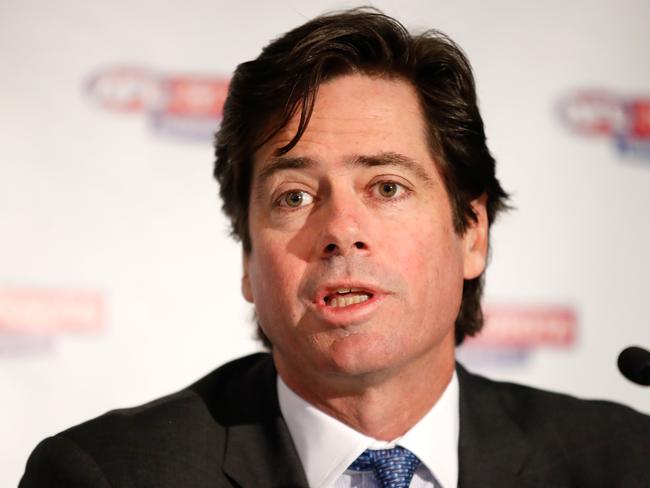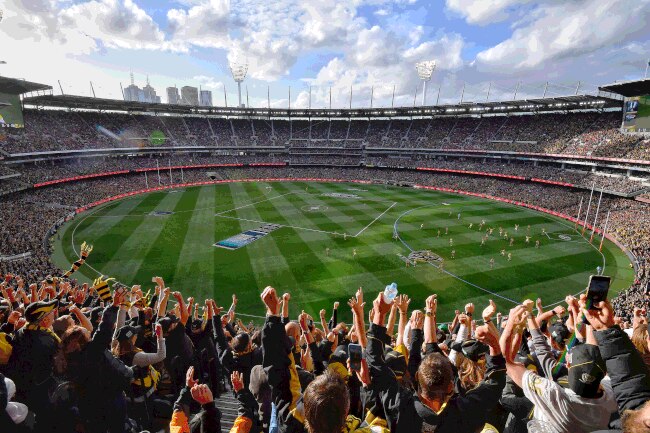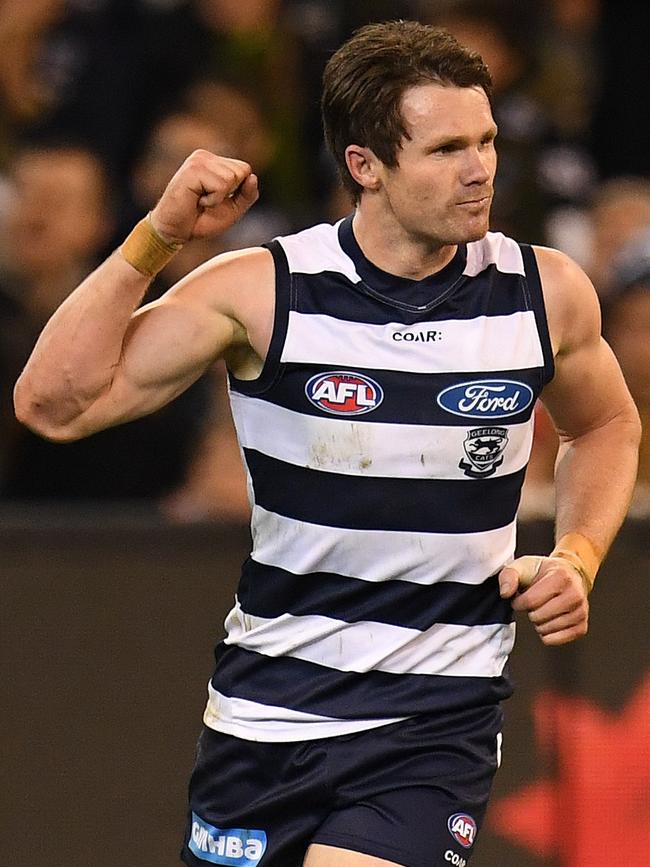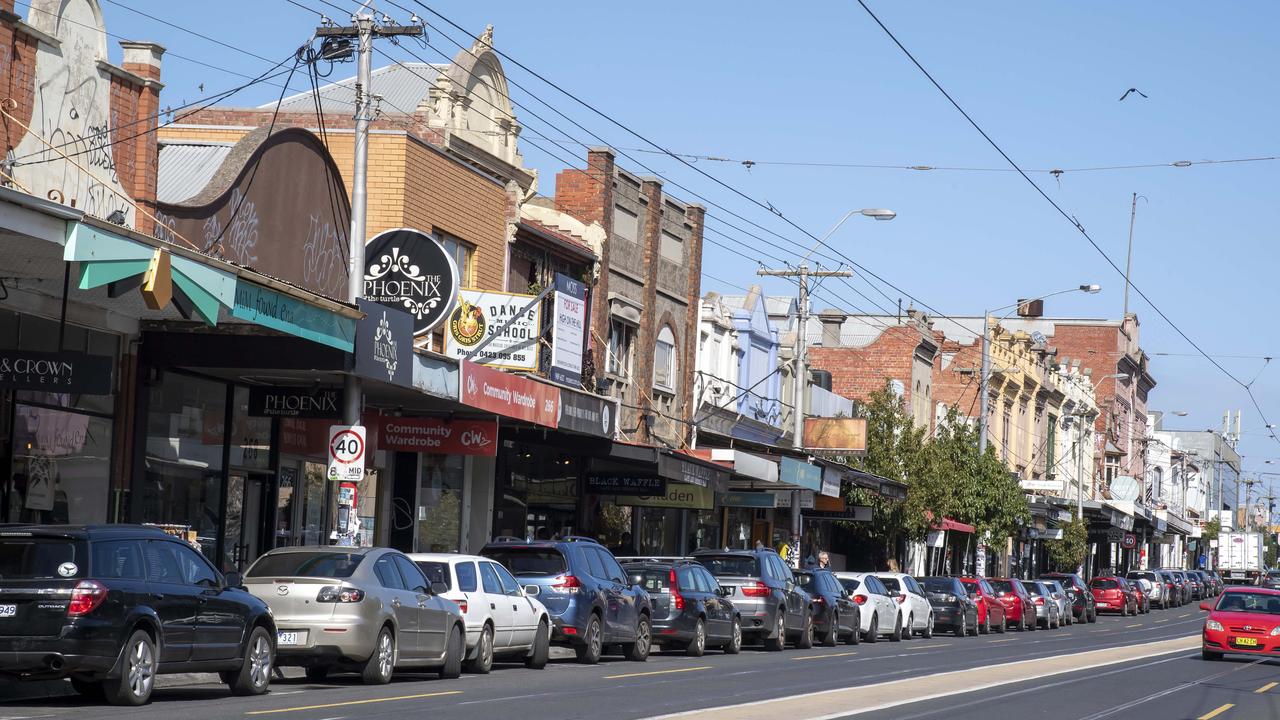Future of the AFL: Aussie rules headed for Pacific revolution
A GENERATION of dramatic change looms for Australian football, writes Eliza Sewell and Jon Ralph. So what will footy look like by 2050?
Future Victoria
Don't miss out on the headlines from Future Victoria. Followed categories will be added to My News.
A PACIFIC Football League succeeding AFL; fewer teams in Melbourne; pre-teens signed by franchises unrecognisable by today’s standards, and superstars on mega-deals outside the salary cap — welcome to footy 2050.
Football thinkers and futurists envision a generation of dramatic change for Australian football, and the revolution is at hand.
THE PARK THAT WOULD CHANGE THE FACE OF THE DOCKLANDS
MCG, ETIHAD STADIUM COULD OPEN TO THE PUBLIC
VOTERS SHOULD MAKE CALL ON $300M ETIHAD PLAN: GUY
Gillon McLachlan and his project executives at AFL headquarters today are modelling proposals for conferences, mid-season player transfers and live draft trading.
But the thinking needs to be much bigger, the Herald Sun panel of experts agree.
Expansion to New Zealand, Asia and the US, and 20 to 24 teams split into conferences, is envisioned.

Renowned demographer Bernard Salt says in 32 years the game we know now “might still be headquartered in Melbourne but it would be a game that is truly global, or is global in this part of the world”.
“West Coast USA and certainly China, with sufficient sponsorship and with supersonic airline travel, I would say that is quite possible. The question is whether you actually call it Australian rules football by that stage. We’ve moved on from Victorian Football League to broaden the appeal, maybe the term Australian becomes a limiting factor.
“It might be called Pacific Football or something like that to broaden the appeal.”
HOW THE RISE OF ESPORTS IS CHANGING THE GAME
AUSSIE RULES HEADED FOR PACIFIC REVOLUTION
Salt predicts the relocation of current teams to new markets, including China and its burgeoning middle class.
“They’ll start sitting at home watching a plasma television with a beer in their hand. Well, we should be providing the beer, Japan will be providing the plasma television, and we can be providing the sports game.
“They need to have connection and buy-in to it, so that needs to be the Shanghai Sharks or the Beijing Bears.
“And if we have to contort the game accordingly … we can adapt. We’re not purists here. We’ve adapted the game extraordinarily, even over the last generation.”

One-time Port Adelaide, Hawthorn and St Kilda football executive Chris Pelchen tips a two-conference league with 20-plus teams and vastly different list systems.
“A player won’t need to be contracted for the whole year, some will sign 4-8 week contracts,” he said.
“There will be 35 players on an active list who are protected and 10 on an inactive list who a club can put on their active list at any time.
“You can upgrade or downgrade a player at any time but if you are downgraded you can move to another club who can pick you up as a free agent. If you want to protect a player who is injured you keep him on your active list. But you can sign players for 4-8 weeks to replace injured players.”
WHAT DOES THE FUTURE HOLD FOR MELBOURNE?
Pelchen says player academies will assume important positions.
“Clubs will be encouraged to go out and develop player academies with AFL support where they can sign players from the age of 12,” he said.
“It’s happening across the world now and in international soccer. It would still be compulsory for them to be at school — then you put them on your list at age 18.”
At the other end of the scale, the very best players will not have their earnings artificially constrained.


“Clubs can have two franchise players where they are outside your salary cap,” Pelchen said. “They are still eligible for free agency when they come out of contract but the outstanding players like Wayne Carey and Gary Ablett Jr and more recently Patrick Dangerfield and Dustin Martin should be able to earn even more money.”
Wayne Jackson, AFL chief executive from 1996-2003, can’t see 10 Victorian teams surviving. A Melbourne team could be sent to merge with the Suns to ensure the league’s venture into southeast Queensland survives.
“My guess is we would have two teams in every state, hopefully a team relocate from Melbourne into Tasmania, hopefully a team relocated from Melbourne into the Northern Territory,” he said.
“And I reckon by 2050 we will have a team in New Zealand or the US west coast.
“It is essential if you are going to be an international or Asian competition, you can’t have 10 teams in Victoria.”


